The Joseph of Genesis as Hellenistic Scientist
Published: July 2013
£75.00
To today's confrontations between religion and science Jovanovic contrasts the vibrant collaboration that characterizes Jewish, Christian, and Islamic beginnings. Designation of the patriarch Joseph as both a dream interpreter and a diviner (Gen. 44.4, 15) is a specific example of biblical appropriation of the ancient Mediterranean understanding of cup divination and dream interpretation as among the scientific activities of its social, spiritual and academic elite.
Jovanovic argues that the image of Joseph as a Hellenistic scientist nourished the popularity of early Jewish and Christian literature on Joseph. The works of Josephus and Philo, Rabbinic midrashim, and the newly discovered The Ethiopic Story of Joseph, as well as Jubilees, The Testaments of the Twelve Patriarchs and Joseph and Aseneth, hold that Joseph's profession was that of a scientist of vision. The interpretation of the symbolic images in dreams and cup divination was a scientific method of communication with the divine and of prediction of the future, which Jovanovic calls 'revelation by visual effects'.
Joseph's image as an Egyptian academic provoked varied responses in Hellenistic Jewish circles. The dismay expressed by Jubilees and Philo arose from Joseph's perceived betrayal of religious and traditional values. The acclamation of Josephus and The Ethiopic Story of Joseph demonstrates that a number of Hellenistic Jews believed that their creative integration into the vibrant Hellenistic culture could be successful and deepen their own Jewish identity.
While previous scholarship has focused on representations of Joseph either as an ethical model or as a type of Christ, this is the first major work that explores the image of Joseph as an ancient scholar and spiritual expert.
The Joseph of Genesis as Hellenistic Scientist
£75.00
To today's confrontations between religion and science Jovanovic contrasts the vibrant collaboration that characterizes Jewish, Christian, and Islamic beginnings. Designation of the patriarch Joseph as both a dream interpreter and a diviner (Gen. 44.4, 15) is a specific example of biblical appropriation of the ancient Mediterranean understanding of cup divination and dream interpretation as among the scientific activities of its social, spiritual and academic elite.
Jovanovic argues that the image of Joseph as a Hellenistic scientist nourished the popularity of early Jewish and Christian literature on Joseph. The works of Josephus and Philo, Rabbinic midrashim, and the newly discovered The Ethiopic Story of Joseph, as well as Jubilees, The Testaments of the Twelve Patriarchs and Joseph and Aseneth, hold that Joseph's profession was that of a scientist of vision. The interpretation of the symbolic images in dreams and cup divination was a scientific method of communication with the divine and of prediction of the future, which Jovanovic calls 'revelation by visual effects'.
Joseph's image as an Egyptian academic provoked varied responses in Hellenistic Jewish circles. The dismay expressed by Jubilees and Philo arose from Joseph's perceived betrayal of religious and traditional values. The acclamation of Josephus and The Ethiopic Story of Joseph demonstrates that a number of Hellenistic Jews believed that their creative integration into the vibrant Hellenistic culture could be successful and deepen their own Jewish identity.
While previous scholarship has focused on representations of Joseph either as an ethical model or as a type of Christ, this is the first major work that explores the image of Joseph as an ancient scholar and spiritual expert.
Now My Eye Sees You: Unveiling an Apocalyptic Job
Published: May 2013
£16.50 – £50.00
This groundbreaking study on the book of Job is the first systematic effort to reveal and organize its apocalyptic impulses. Drawing on such scholars as John Collins, Christopher Rowland and Frank Moore Cross, Johnson argues that interpreting Job through the lens of apocalypse yields a coherent reading that is able to incorporate all of the seemingly disparate literary features of the book that historically stymie interpreters.
An apocalyptic reading of Job begins with the presence of three important revelations: Eliphaz's vision, the hymn to wisdom and the Yahweh speeches. A literary division following these revelations contributes to the book's overall emphasis, which is to persevere in the midst of suffering. Thorny questions such as the reason Elihu was not rebuked by God in the epilogue receive fresh treatment from an apocalyptic paradigm.
In tracing the history of the interpretation of Job, Johnson offers evidence that both Jewish and Christian traditions recognized many of these 'apocalyptic' elements. For example, the LXX version of Job contains a resurrection plus in the epilogue, the Testament of Job emphasizes the influence of Satan, the Qumran sect may have drawn strength from the book's message to persevere, and the 'apocalyptic' passage of James upholds Job as a model for perseverance.
Viewing Job as a nascent form of apocalypse may also resuscitate Von Rad's hypothesis that apocalypse grew out of wisdom categories over against the more commonly accepted prophetic works.
Students of Job at all levels are treated here to a stimulating appraisal that will open their eyes to the apocalyptic characteristics woven throughout this diverse book. This monograph will make important contributions to genre studies, the history of interpretation and be valuable to those interested in the intersection of wisdom and apocalypse.
Now My Eye Sees You: Unveiling an Apocalyptic Job
£16.50 – £50.00
This groundbreaking study on the book of Job is the first systematic effort to reveal and organize its apocalyptic impulses. Drawing on such scholars as John Collins, Christopher Rowland and Frank Moore Cross, Johnson argues that interpreting Job through the lens of apocalypse yields a coherent reading that is able to incorporate all of the seemingly disparate literary features of the book that historically stymie interpreters.
An apocalyptic reading of Job begins with the presence of three important revelations: Eliphaz's vision, the hymn to wisdom and the Yahweh speeches. A literary division following these revelations contributes to the book's overall emphasis, which is to persevere in the midst of suffering. Thorny questions such as the reason Elihu was not rebuked by God in the epilogue receive fresh treatment from an apocalyptic paradigm.
In tracing the history of the interpretation of Job, Johnson offers evidence that both Jewish and Christian traditions recognized many of these 'apocalyptic' elements. For example, the LXX version of Job contains a resurrection plus in the epilogue, the Testament of Job emphasizes the influence of Satan, the Qumran sect may have drawn strength from the book's message to persevere, and the 'apocalyptic' passage of James upholds Job as a model for perseverance.
Viewing Job as a nascent form of apocalypse may also resuscitate Von Rad's hypothesis that apocalypse grew out of wisdom categories over against the more commonly accepted prophetic works.
Students of Job at all levels are treated here to a stimulating appraisal that will open their eyes to the apocalyptic characteristics woven throughout this diverse book. This monograph will make important contributions to genre studies, the history of interpretation and be valuable to those interested in the intersection of wisdom and apocalypse.
Admen and Eve: The Bible in Contemporary Advertising
Published: Nov 2012
£50.00
This remarkable new book, the first of its kind, is an analysis of a phenomenon that biblical scholars have scarcely taken notice of, much less studied critically —the use of the Bible in advertising. Focussing on the figure of Eve, Admen and Eve shows how she has become the ultimate postfeminist icon of female sexual and consumer power, promoting self-regarding individual choice over collective political action for today's 'I'm not a feminist but ...' generation.
Contemporary advertising, Edwards shows, deploys a collage of images simultaneously reflecting and dictating the ideals and ideologies that inform much of Western culture. Exploiting the cultural mythology that surrounds Eve, advertisers constantly recycle images of this biblical figure because she is easily recognizable by the target consumer. In so doing, they are shaping how women and men see each other and themselves and how they treat each other and themselves, persuading them to become their culturally dictated dream through the products they consume.
Eve in advertising is then a revealing example of how the Bible functions today. But Admen and Eve is not a value-free and apolitical analysis; it is an incitement to the exposure and subversion of today's dominant cultural attitudes to gender roles.
Admen and Eve: The Bible in Contemporary Advertising
£50.00
This remarkable new book, the first of its kind, is an analysis of a phenomenon that biblical scholars have scarcely taken notice of, much less studied critically —the use of the Bible in advertising. Focussing on the figure of Eve, Admen and Eve shows how she has become the ultimate postfeminist icon of female sexual and consumer power, promoting self-regarding individual choice over collective political action for today's 'I'm not a feminist but ...' generation.
Contemporary advertising, Edwards shows, deploys a collage of images simultaneously reflecting and dictating the ideals and ideologies that inform much of Western culture. Exploiting the cultural mythology that surrounds Eve, advertisers constantly recycle images of this biblical figure because she is easily recognizable by the target consumer. In so doing, they are shaping how women and men see each other and themselves and how they treat each other and themselves, persuading them to become their culturally dictated dream through the products they consume.
Eve in advertising is then a revealing example of how the Bible functions today. But Admen and Eve is not a value-free and apolitical analysis; it is an incitement to the exposure and subversion of today's dominant cultural attitudes to gender roles.
The Book of Isaiah: Its Composition and Final Form
Published: Oct 2012
£80.00
Study of the book of Isaiah has in recent times been strongly marked by a tension between synchronic and diachronic approaches. The first is favoured mainly by English-speaking, the second by German-speaking scholars. Berges's book attempts to mediate between the two poles, arguing that the final form analysis and the tracing of the development of that form are deeply interdependent.
This new research paradigm is applied here to the entire text of the book of Isaiah. Berges works consistently from the synchronic to the diachronic and back again to the evolved synchronous final form. Features that have been repeatedly observed —the cross-connections, key word associations, resumption of themes, and especially the bracketing of the book by chaps. 1 and 66 —are traces of a deliberate interweaving of various small compositions as well as of larger literary redactions.
The paradigm most suited to the book of Isaiah in all its complexity is not that of one comprehensive overall structure or final redaction, but that of smaller compositions that build on one another, come into conversation with one another, and, each in its own way, bring into play specific contemporary problems. We should not force a common thematic denominator on the book, but it becomes clear that Jerusalem and Zion belong to the basic tenor of the book of Isaiah as it was developed and refashioned through the centuries.
The Book of Isaiah: Its Composition and Final Form is translated by Millard C. Lind from its German original, Das Buch Jesaja: Komposition und Endgestalt (Freiburg: Herder, 1998).
The Book of Isaiah: Its Composition and Final Form
£80.00
Study of the book of Isaiah has in recent times been strongly marked by a tension between synchronic and diachronic approaches. The first is favoured mainly by English-speaking, the second by German-speaking scholars. Berges's book attempts to mediate between the two poles, arguing that the final form analysis and the tracing of the development of that form are deeply interdependent.
This new research paradigm is applied here to the entire text of the book of Isaiah. Berges works consistently from the synchronic to the diachronic and back again to the evolved synchronous final form. Features that have been repeatedly observed —the cross-connections, key word associations, resumption of themes, and especially the bracketing of the book by chaps. 1 and 66 —are traces of a deliberate interweaving of various small compositions as well as of larger literary redactions.
The paradigm most suited to the book of Isaiah in all its complexity is not that of one comprehensive overall structure or final redaction, but that of smaller compositions that build on one another, come into conversation with one another, and, each in its own way, bring into play specific contemporary problems. We should not force a common thematic denominator on the book, but it becomes clear that Jerusalem and Zion belong to the basic tenor of the book of Isaiah as it was developed and refashioned through the centuries.
The Book of Isaiah: Its Composition and Final Form is translated by Millard C. Lind from its German original, Das Buch Jesaja: Komposition und Endgestalt (Freiburg: Herder, 1998).
The Book of Job in Post-Holocaust Thought
Published: Aug 2012
£40.00
The story of Job's suffering has often been appealed to by those responding to the Holocaust. This book explores a rich variety of such receptions of the Book of Job, highlighting the need to appreciate the tensions present in both the biblical text of Job and in perceptions of the Holocaust's meaning. Attention is given to the often creative modes of reading used by those appealing to Job, and the presence of complex interactions between theology, textual interpretation, and historical analysis. Receptions of Job examined include those presented by key post-Holocaust thinkers such as Emil Fackenheim, Elie Wiesel and Richard Rubenstein.
Bringing together elements of biblical studies and Holocaust studies, David Tollerton shows that Job has been harnessed for an array of purposes, from asserting the continuity of Jewish faith amid the traumas of twentieth-century history, to resisting the idea that there can be any decisive religious 'answer' to the Holocaust. Despite the diversity of ways in which Job has been cited, it is shown that such reception is nonetheless controversial, doubts being repeatedly raised whether Job is appropriate to the Holocaust context. While ultimately proposing that Job does indeed have a valuable role to play, The Book of Job in Post-Holocaust Thought argues that in some cases such doubts are in order, and that some receptions should be queried on textual, historical or ethical grounds.
This book will be of interest to readers concerned with the modern reception of wisdom literature, theological responses to the Holocaust, or simply the manner in which the Bible has been used by communities attempting to make sense of modernity's darkest aspects.
The Book of Job in Post-Holocaust Thought
£40.00
The story of Job's suffering has often been appealed to by those responding to the Holocaust. This book explores a rich variety of such receptions of the Book of Job, highlighting the need to appreciate the tensions present in both the biblical text of Job and in perceptions of the Holocaust's meaning. Attention is given to the often creative modes of reading used by those appealing to Job, and the presence of complex interactions between theology, textual interpretation, and historical analysis. Receptions of Job examined include those presented by key post-Holocaust thinkers such as Emil Fackenheim, Elie Wiesel and Richard Rubenstein.
Bringing together elements of biblical studies and Holocaust studies, David Tollerton shows that Job has been harnessed for an array of purposes, from asserting the continuity of Jewish faith amid the traumas of twentieth-century history, to resisting the idea that there can be any decisive religious 'answer' to the Holocaust. Despite the diversity of ways in which Job has been cited, it is shown that such reception is nonetheless controversial, doubts being repeatedly raised whether Job is appropriate to the Holocaust context. While ultimately proposing that Job does indeed have a valuable role to play, The Book of Job in Post-Holocaust Thought argues that in some cases such doubts are in order, and that some receptions should be queried on textual, historical or ethical grounds.
This book will be of interest to readers concerned with the modern reception of wisdom literature, theological responses to the Holocaust, or simply the manner in which the Bible has been used by communities attempting to make sense of modernity's darkest aspects.
Three Old Testament Theologies for Today: Helge S. Kvanvig, Walter Brueggemann and Erhard Gerstenberger
Published: Jun 2012
£50.00
This book is a critical analysis and comparison of three Old Testament theologies, those by Helge S. Kvanvig, Historisk Bibel og bibelsk historie (1999), Walter Brueggemann, Theology of the Old Testament (1997), and Erhard S. Gerstenberger, Theologies of the Old Testament (2002). Since Kvanvig's book is written in Norwegian, his book is not generally known among Old Testament scholars outside Scandinavia. The three volumes have different theological profiles. Kvanvig, unlike other Old Testament theologians, allows theology to develop from his analyses of the biblical narratives and the strategies available to readers. Gerstenberger presents Old Testament theology as a plurality of theologies, and his book is as much a history of Israelite religion and ancient Israel's social history as a theology proper. Brueggemann sees Old Testament theology within the framework of a virtual trial between Israel and Yahweh. All three books are to some degree postmodern in their approach to Old Testament theology, Gerstenberger to a lesser degree, Brueggemann to a greater degree. Hagelia argues that Kvanvig's book could with profit be read as a prolegomenon to Brueggemann's book, whereas Gerstenberger's book follows a different track. On the basis of these three eminent contributions, the author outlines a possible future for the business of writing Old Testament theologies, suggesting that future theologies will be much more in conversation with contemporary issues, ethical, political and social, than the traditional theologies of the past have been.
Three Old Testament Theologies for Today: Helge S. Kvanvig, Walter Brueggemann and Erhard Gerstenberger
£50.00
This book is a critical analysis and comparison of three Old Testament theologies, those by Helge S. Kvanvig, Historisk Bibel og bibelsk historie (1999), Walter Brueggemann, Theology of the Old Testament (1997), and Erhard S. Gerstenberger, Theologies of the Old Testament (2002). Since Kvanvig's book is written in Norwegian, his book is not generally known among Old Testament scholars outside Scandinavia. The three volumes have different theological profiles. Kvanvig, unlike other Old Testament theologians, allows theology to develop from his analyses of the biblical narratives and the strategies available to readers. Gerstenberger presents Old Testament theology as a plurality of theologies, and his book is as much a history of Israelite religion and ancient Israel's social history as a theology proper. Brueggemann sees Old Testament theology within the framework of a virtual trial between Israel and Yahweh. All three books are to some degree postmodern in their approach to Old Testament theology, Gerstenberger to a lesser degree, Brueggemann to a greater degree. Hagelia argues that Kvanvig's book could with profit be read as a prolegomenon to Brueggemann's book, whereas Gerstenberger's book follows a different track. On the basis of these three eminent contributions, the author outlines a possible future for the business of writing Old Testament theologies, suggesting that future theologies will be much more in conversation with contemporary issues, ethical, political and social, than the traditional theologies of the past have been.
Joseph and Aseneth: A Christian Book
Published: Feb 2012
£55.00
Joseph and Aseneth , a book of the Old Testament Pseudepigrapha, is a love story about the biblical Joseph and his Egyptian wife Aseneth which, in richly symbolic language, tells how the idol worshipper Aseneth was converted to belief in the one God. In recent decades, it has featured prominently in discussions of Second Temple Judaism as a testimony to a Hellenistic diaspora Judaism that neither observed the rules of conversion to Judaism ( giyyur ) nor cared much for the laws of the Torah. Rivka Nir offers a completely different understanding. Joseph and Aseneth , she argues, teaches us nothing about Second Temple Judaism. Rather, its vocabulary, ideas, symbols and structure become fully comprehensible only when viewed against the background of Syriac Christianity of the third and fourth century. In this setting, Aseneth and Joseph are symbolic and typological images: Aseneth symbolizes the church, Joseph is a prototype of Christ, and their marriage is a symbolic representation of the eternal marriage between Christ and the church. Aseneth's religious transformation should be understood as conversion to Christianity, an example for polytheists to follow. Turning our attention to the central role virginity plays in the story, Nir addresses the problematic scene of the honeycomb and the bees, reading it as a call to those joining the church to take a vow of virginity and resolve to lead a life of sexual abstinence. Through Nir's detailed analysis of the symbols and metaphors of Joseph and Aseneth in a Christian context, the book coalesces into a tightly integrated and meaningful whole, on both the theological and the symbolic levels.
Joseph and Aseneth: A Christian Book
£55.00
Joseph and Aseneth , a book of the Old Testament Pseudepigrapha, is a love story about the biblical Joseph and his Egyptian wife Aseneth which, in richly symbolic language, tells how the idol worshipper Aseneth was converted to belief in the one God. In recent decades, it has featured prominently in discussions of Second Temple Judaism as a testimony to a Hellenistic diaspora Judaism that neither observed the rules of conversion to Judaism ( giyyur ) nor cared much for the laws of the Torah. Rivka Nir offers a completely different understanding. Joseph and Aseneth , she argues, teaches us nothing about Second Temple Judaism. Rather, its vocabulary, ideas, symbols and structure become fully comprehensible only when viewed against the background of Syriac Christianity of the third and fourth century. In this setting, Aseneth and Joseph are symbolic and typological images: Aseneth symbolizes the church, Joseph is a prototype of Christ, and their marriage is a symbolic representation of the eternal marriage between Christ and the church. Aseneth's religious transformation should be understood as conversion to Christianity, an example for polytheists to follow. Turning our attention to the central role virginity plays in the story, Nir addresses the problematic scene of the honeycomb and the bees, reading it as a call to those joining the church to take a vow of virginity and resolve to lead a life of sexual abstinence. Through Nir's detailed analysis of the symbols and metaphors of Joseph and Aseneth in a Christian context, the book coalesces into a tightly integrated and meaningful whole, on both the theological and the symbolic levels.
Emotions in Biblical Law: A Cognitive Science Approach
Published: Oct 2011
£50.00
This study pioneers the use of insights from cognitive sciences, such as evolutionary biology, neuroscience, and developmental psychology, as heuristic tools for interpreting ancient texts. The approach could be described as 'psycho-biological'. The focus is on emotions in the various Pentateuchal legal collections. Kazen discusses the role of disgust, empathy, fear, and a sense of justice, for particular moral and ritual issues: purity and holiness; humanitarian concern for vulnerable categories; ethnocentrism and xenophobia; divine punishment and demonic threat; revenge, compensation, and ransom (kofer), together with removal (kipper) rites.
The book consists of two main parts, framed by an introductory chapter and a concluding discussion. In the first part, Kazen explores cognitive foundations, including biological and neuroscientific underpinnings for basic affects, and the role of culture in shaping both conventional morality and ritual behaviour. Four particular emotions are then outlined. In the second part, these insights from cognitive science are applied in analyses of particular texts. After an overview of the Pentateuchal legal collections, each of the four emotions is dealt with in a separate chapter. Kazen constantly relates a cognitive science approach to more traditional source and redaction-critical analysis, regarding them as complementary.
As a result, the Pentateuchal legal collections are seen as emotional texts, expressing strong affects —which influences our understanding of the character of Israelite 'law'. Kazen suggests that interaction and conflict between various emotions can explain discrepancies and tensions between humanitarian concerns and ethnocentrism, and between empathy and justice. He also demonstrates that viewing emotions as common denominators contains a potential for solving some difficult and long-standing conundrums. He argues that a focus on the human embodied experience rather than on theological convictions and theoretical ideas may avoid some interpretative dead ends and open up new avenues for understanding ancient texts.
Emotions in Biblical Law: A Cognitive Science Approach
£50.00
This study pioneers the use of insights from cognitive sciences, such as evolutionary biology, neuroscience, and developmental psychology, as heuristic tools for interpreting ancient texts. The approach could be described as 'psycho-biological'. The focus is on emotions in the various Pentateuchal legal collections. Kazen discusses the role of disgust, empathy, fear, and a sense of justice, for particular moral and ritual issues: purity and holiness; humanitarian concern for vulnerable categories; ethnocentrism and xenophobia; divine punishment and demonic threat; revenge, compensation, and ransom (kofer), together with removal (kipper) rites.
The book consists of two main parts, framed by an introductory chapter and a concluding discussion. In the first part, Kazen explores cognitive foundations, including biological and neuroscientific underpinnings for basic affects, and the role of culture in shaping both conventional morality and ritual behaviour. Four particular emotions are then outlined. In the second part, these insights from cognitive science are applied in analyses of particular texts. After an overview of the Pentateuchal legal collections, each of the four emotions is dealt with in a separate chapter. Kazen constantly relates a cognitive science approach to more traditional source and redaction-critical analysis, regarding them as complementary.
As a result, the Pentateuchal legal collections are seen as emotional texts, expressing strong affects —which influences our understanding of the character of Israelite 'law'. Kazen suggests that interaction and conflict between various emotions can explain discrepancies and tensions between humanitarian concerns and ethnocentrism, and between empathy and justice. He also demonstrates that viewing emotions as common denominators contains a potential for solving some difficult and long-standing conundrums. He argues that a focus on the human embodied experience rather than on theological convictions and theoretical ideas may avoid some interpretative dead ends and open up new avenues for understanding ancient texts.
Jerusalem and the Nations: Studies in the Book of Isaiah
Published: Sep 2011
£50.00
This volume contains the fruit of three decades of Ronald Clements's researches on prophecy in the Old Testament. In sixteen papers, seven of them not previously published, he broaches several leading questions about the origins of written prophecy in the Old Testament. A major focus is on the impact of the events of 701 BCE on the formation of the Isaiah book as a whole and the rise of Jerusalem as a centre of religious hope.
Further studies deal with the role of the Isaiah book in current biblical interpretation and the failure of twentieth-century interpreters to explain its unity. Other subjects concern ideas of divine providence, theodicy, and the links between ancient scribal methods of book formation and canonical authority. Special attention is given to the attempts to retain traditional Christian approaches to a book, the interpretation of which has been greatly transformed by modern critical study.
Jerusalem and the Nations: Studies in the Book of Isaiah
£50.00
This volume contains the fruit of three decades of Ronald Clements's researches on prophecy in the Old Testament. In sixteen papers, seven of them not previously published, he broaches several leading questions about the origins of written prophecy in the Old Testament. A major focus is on the impact of the events of 701 BCE on the formation of the Isaiah book as a whole and the rise of Jerusalem as a centre of religious hope.
Further studies deal with the role of the Isaiah book in current biblical interpretation and the failure of twentieth-century interpreters to explain its unity. Other subjects concern ideas of divine providence, theodicy, and the links between ancient scribal methods of book formation and canonical authority. Special attention is given to the attempts to retain traditional Christian approaches to a book, the interpretation of which has been greatly transformed by modern critical study.
Through the ‘I’-Window: The Inner Life of Characters in the Hebrew Bible
Published: Mar 2011
£60.00
It is often said that the inner life of characters in the Hebrew Bible is inaccessible to us, and that we can know little or nothing about how they felt and thought. In this study, original in both its scope and its method, Barbara Leung Lai shows how wrong that assumption is. She directs our attention to the many places where her chosen characters, Daniel, Isaiah, and Yahweh, speak of themselves, using the first-person 'I' voice, and finds those to be a unique point of entry, or window, into the interiority of the characters.
To construct an interior profile of these characters, Leung Lai develops an integrated methodology of psychological exegesis, drawing upon psychological perspectives of personality, Bakhtinian views of polyphony and dialogism, current studies of emotion, self and selfhood, and the empirics of reading under the rubric of reader-response literary criticism.
From these perspectives, Leung Lai can identify in Daniel two primary realms in his inner identity-seeing and emotive experiencing -- and can characterize Daniel's interior world as a world of paradoxes, of seeing without comprehending, hearing without the capacity to respond. Isaiah, on the other hand, exhibits a broad spectrum of emotions, from love, intimacy, joy and empathy to a sense of being under divine constraint, and to mourning, lament, doubt, distress, helplessness and despair. The prophet exhibits a profound sense of selfhood and subtle inner depths. The character of Yahweh is found to be most striking for its inner conflicts, with its frustrations, disappointments, pain and suffering.
This groundbreaking book will stimulate many readers to a new appreciation of characterization in the Hebrew Bible.
Through the ‘I’-Window: The Inner Life of Characters in the Hebrew Bible
£60.00
It is often said that the inner life of characters in the Hebrew Bible is inaccessible to us, and that we can know little or nothing about how they felt and thought. In this study, original in both its scope and its method, Barbara Leung Lai shows how wrong that assumption is. She directs our attention to the many places where her chosen characters, Daniel, Isaiah, and Yahweh, speak of themselves, using the first-person 'I' voice, and finds those to be a unique point of entry, or window, into the interiority of the characters.
To construct an interior profile of these characters, Leung Lai develops an integrated methodology of psychological exegesis, drawing upon psychological perspectives of personality, Bakhtinian views of polyphony and dialogism, current studies of emotion, self and selfhood, and the empirics of reading under the rubric of reader-response literary criticism.
From these perspectives, Leung Lai can identify in Daniel two primary realms in his inner identity-seeing and emotive experiencing -- and can characterize Daniel's interior world as a world of paradoxes, of seeing without comprehending, hearing without the capacity to respond. Isaiah, on the other hand, exhibits a broad spectrum of emotions, from love, intimacy, joy and empathy to a sense of being under divine constraint, and to mourning, lament, doubt, distress, helplessness and despair. The prophet exhibits a profound sense of selfhood and subtle inner depths. The character of Yahweh is found to be most striking for its inner conflicts, with its frustrations, disappointments, pain and suffering.
This groundbreaking book will stimulate many readers to a new appreciation of characterization in the Hebrew Bible.
Holiness, Ethics and Ritual in Leviticus
Published: Feb 2011
£70.00
In this book, Trevaskis argues that holiness in Leviticus always has an ethical dimension, and is not simply a cultic category. In so doing he departs from the usual view that in Leviticus 1 —16 (P) holiness is largely a cultic concept. Biblical scholars have commonly read ritual texts as practical instruction or prescription, inferring the theological significance of the rituals from elsewhere. For example, theological interpretations of the 'burnt offering' have been derived from its use in narrative settings (e.g. Gen. 8:20; 22:13) rather than from its legal prescription in Leviticus 1.
Trevaskis, however, argues that an implicit command to be holy exists within some ritual texts in Leviticus, which are more than mere ritual prescriptions. It is in the symbolic dimensions of the rituals that the theological significance lies. In support of this argument, he undertakes exegetical studies of the 'burnt offering' (Leviticus 1), of the 'purity regulations' (Leviticus 11 —15) and of the physical appearance of priests and sacrificial animals (Leviticus 21 —22). These studies take place within a methodological framework that avoids capricious symbolic interpretations. Trevaskis draws on cognitive linguistic insights to discern when a text may allude to other texts within the Pentateuch (especially Genesis 1 —3), and attends to the legislator's use of various rhetorical devices (e.g. 'rhetorical progression').
Since the command to 'be holy' in Leviticus 17 —26 (H) only makes explicit what P leaves implicit in Leviticus 1 —16, this study has important implications for the compositional history of Leviticus. It becomes much less clear that H's ethical view of holiness developed from a prophetic critique of P (as Milgrom and Knohl, for example, argue).
Holiness, Ethics and Ritual in Leviticus
£70.00
In this book, Trevaskis argues that holiness in Leviticus always has an ethical dimension, and is not simply a cultic category. In so doing he departs from the usual view that in Leviticus 1 —16 (P) holiness is largely a cultic concept. Biblical scholars have commonly read ritual texts as practical instruction or prescription, inferring the theological significance of the rituals from elsewhere. For example, theological interpretations of the 'burnt offering' have been derived from its use in narrative settings (e.g. Gen. 8:20; 22:13) rather than from its legal prescription in Leviticus 1.
Trevaskis, however, argues that an implicit command to be holy exists within some ritual texts in Leviticus, which are more than mere ritual prescriptions. It is in the symbolic dimensions of the rituals that the theological significance lies. In support of this argument, he undertakes exegetical studies of the 'burnt offering' (Leviticus 1), of the 'purity regulations' (Leviticus 11 —15) and of the physical appearance of priests and sacrificial animals (Leviticus 21 —22). These studies take place within a methodological framework that avoids capricious symbolic interpretations. Trevaskis draws on cognitive linguistic insights to discern when a text may allude to other texts within the Pentateuch (especially Genesis 1 —3), and attends to the legislator's use of various rhetorical devices (e.g. 'rhetorical progression').
Since the command to 'be holy' in Leviticus 17 —26 (H) only makes explicit what P leaves implicit in Leviticus 1 —16, this study has important implications for the compositional history of Leviticus. It becomes much less clear that H's ethical view of holiness developed from a prophetic critique of P (as Milgrom and Knohl, for example, argue).
The Demise of the Warlord: A New Look at the David Story
Published: Oct 2010
£50.00
The novelty of this monograph on David and Bathsheba (2 Sam. 11 —12) lies in its placing the narrative in the context of the behaviour of nomadic warlords and Amorite tribal chieftains as reflected in several Akkadian texts from Mari and Mesopotamia. The biblical story is interpreted in the light of an Akkadian literary topos depicting the ideal warlike existence of a Bedouin tribal chieftain. According to this topos, David's dallying with women, and eating, drinking and living in the shade rather than leading armies into military exploits would be considered unworthy of a warlord and disparaging to his reputation.
Another new feature in this book is the explanation of the treatment that King David inflicted on Uriah the Hittite, a 'resident alien' according to the rabbis, in the light of the outrage that a high official of a Pharaoh committed upon a resident-alien in El-Amarna times. There seems to have existed a non-written ancient Near Eastern law about the obligation of protecting and not harming resident aliens. As evidenced by the El-Amarna letter 162, disregard for this law entailed a death sentence on the perpetrator of such an outrage. In 2 Samuel 11 —12 the outrage done to the resident alien is expressed through the literary motif of the abduction of the beautiful wife in the context of oppression and threat exercised by the powerful over the weak and the helpless.
The Demise of the Warlord: A New Look at the David Story
£50.00
The novelty of this monograph on David and Bathsheba (2 Sam. 11 —12) lies in its placing the narrative in the context of the behaviour of nomadic warlords and Amorite tribal chieftains as reflected in several Akkadian texts from Mari and Mesopotamia. The biblical story is interpreted in the light of an Akkadian literary topos depicting the ideal warlike existence of a Bedouin tribal chieftain. According to this topos, David's dallying with women, and eating, drinking and living in the shade rather than leading armies into military exploits would be considered unworthy of a warlord and disparaging to his reputation.
Another new feature in this book is the explanation of the treatment that King David inflicted on Uriah the Hittite, a 'resident alien' according to the rabbis, in the light of the outrage that a high official of a Pharaoh committed upon a resident-alien in El-Amarna times. There seems to have existed a non-written ancient Near Eastern law about the obligation of protecting and not harming resident aliens. As evidenced by the El-Amarna letter 162, disregard for this law entailed a death sentence on the perpetrator of such an outrage. In 2 Samuel 11 —12 the outrage done to the resident alien is expressed through the literary motif of the abduction of the beautiful wife in the context of oppression and threat exercised by the powerful over the weak and the helpless.
The Centre and the Periphery: A European Tribute to Walter Brueggemann
Published: Oct 2010
£50.00
In this valuable volume, 13 scholars from Britain, Ireland, Denmark, Sweden, Norway and Germany pay tribute to Walter Brueggemann's outstanding contribution to Old Testament studies, notably his Theology of the Old Testament (1997). His own setting is the USA, and it is not generally recognized how far-reaching his influence has been. This volume aims to demonstrate that many scholars in diverse locations have been stimulated by the sweep of his energetic criticism.
Brueggemann himself often speaks of Old Testament scholarship in terms of centre and margin, meaning thereby the dominant historical-critical mode of research as against the new types of analysis that have come into being in the last decades. He constantly has recourse also to the Hebrew Bible's own tension between a mainstream centre with its testimony to Yahweh's power, providence and justice and a margin according to which the deity is called to account for failures in divine governance.
The essays in Part I are devoted to 'centrist' questions in the main, including contributions from Rainer Albertz, Katharine Dell, Frederik Lindstršm, Christoph Bultmann, and Hugh Williamson. The essays in Part II are from scholars who apply a range of alternative or 'peripheral' interpretative methods, Walter Moberly, Terje Stordalen, Jill Middlemas, Ulrich Berges, Mark Gray, Else Holt, Gordon McConville and David Clines.
The Centre and the Periphery: A European Tribute to Walter Brueggemann
£50.00
In this valuable volume, 13 scholars from Britain, Ireland, Denmark, Sweden, Norway and Germany pay tribute to Walter Brueggemann's outstanding contribution to Old Testament studies, notably his Theology of the Old Testament (1997). His own setting is the USA, and it is not generally recognized how far-reaching his influence has been. This volume aims to demonstrate that many scholars in diverse locations have been stimulated by the sweep of his energetic criticism.
Brueggemann himself often speaks of Old Testament scholarship in terms of centre and margin, meaning thereby the dominant historical-critical mode of research as against the new types of analysis that have come into being in the last decades. He constantly has recourse also to the Hebrew Bible's own tension between a mainstream centre with its testimony to Yahweh's power, providence and justice and a margin according to which the deity is called to account for failures in divine governance.
The essays in Part I are devoted to 'centrist' questions in the main, including contributions from Rainer Albertz, Katharine Dell, Frederik Lindstršm, Christoph Bultmann, and Hugh Williamson. The essays in Part II are from scholars who apply a range of alternative or 'peripheral' interpretative methods, Walter Moberly, Terje Stordalen, Jill Middlemas, Ulrich Berges, Mark Gray, Else Holt, Gordon McConville and David Clines.
Reworking the Bible: The Literary Reception-History of Fourteen Biblical Stories
Published: Jun 2010
£55.00
Reworking the Bible is a substantial account of the reception history of fourteen biblical stories —those of Eden, the Flood, Jacob and Esau, Moses and the Exodus, Joshua and Rahab, Samson, Nebuchadnezzar, Susanna, Esther, Jesus Christ, Salome, Lazarus, the Prodigal Son and the Descent into Hell. Full of fascinating detail of the afterlives of these biblical narratives, the book also offers a sophisticated theoretical analysis of the processes of reworking: major hypertexts from The Dream of the Rood to Margaret Atwood's The Year of the Flood come under the spotlight of the theories of Genette about rewriting and of Bakhtin about chronotopes and polyphony. In the final chapter, the material is viewed from the point of view of its spatial overtones, highlighting works that use the retelling of biblical stories to transport the reader to somewhere beyond controlling monological cultures.
As well as providing close readings of some extraordinary literary reworkings, the book provides a guide to the available critical literature. Both the biblical stories themselves and the works of Chaucer, Shakespeare, Racine, George Eliot, Turgenev, Kafka, Iris Murdoch, Julian Barnes, Ben Okri and many others are cast in a new light, including many plays, novels and poems that have been surprisingly neglected. The works discussed range from the hilarious to the horrific and have the capacity to refresh and even transform our reading of the Bible.
Reworking the Bible: The Literary Reception-History of Fourteen Biblical Stories
£55.00
Reworking the Bible is a substantial account of the reception history of fourteen biblical stories —those of Eden, the Flood, Jacob and Esau, Moses and the Exodus, Joshua and Rahab, Samson, Nebuchadnezzar, Susanna, Esther, Jesus Christ, Salome, Lazarus, the Prodigal Son and the Descent into Hell. Full of fascinating detail of the afterlives of these biblical narratives, the book also offers a sophisticated theoretical analysis of the processes of reworking: major hypertexts from The Dream of the Rood to Margaret Atwood's The Year of the Flood come under the spotlight of the theories of Genette about rewriting and of Bakhtin about chronotopes and polyphony. In the final chapter, the material is viewed from the point of view of its spatial overtones, highlighting works that use the retelling of biblical stories to transport the reader to somewhere beyond controlling monological cultures.
As well as providing close readings of some extraordinary literary reworkings, the book provides a guide to the available critical literature. Both the biblical stories themselves and the works of Chaucer, Shakespeare, Racine, George Eliot, Turgenev, Kafka, Iris Murdoch, Julian Barnes, Ben Okri and many others are cast in a new light, including many plays, novels and poems that have been surprisingly neglected. The works discussed range from the hilarious to the horrific and have the capacity to refresh and even transform our reading of the Bible.
The Prophetic Lawsuit in the Book of Revelation
Published: May 2010
£60.00
The language, metaphors and storyline of the Book of Revelation evoke a cosmic law court setting. Juridical metaphors of a legal contest between the faithful witnesses and the 'accuser of the brethren' are intertwined throughout with images of holy war. Although such features have often been noted, this is the first full-length study drawing together the diverse evidence and reading the book through the lens of the controlling metaphor of the lawsuit.
The background of the law court setting in Revelation is the Old Testament prophetic genre of the lawsuit, sometimes conceived of as a lawsuit against God's own people for their violations of the covenant, sometimes as a lawsuit against foreign nations for their oppression of Israel. Prophetic lawsuit language often culminated in oracles of salvation announcing the vindication of the righteous.
Reading Revelation with an awareness of the prophetic lawsuit motif will enable readers to interpret the juridical images as consistent features in the overall narrative. The purpose of Revelation's narrative is to depict the sovereign judge of the universe rendering ultimate justice through the condemnation of the wicked and the vindication of the saints. This message of vindication is intended to encourage Christians in Asia Minor at the end of the first century not to capitulate or even accommodate to the socio-religious norms of their time.
The Prophetic Lawsuit in the Book of Revelation
£60.00
The language, metaphors and storyline of the Book of Revelation evoke a cosmic law court setting. Juridical metaphors of a legal contest between the faithful witnesses and the 'accuser of the brethren' are intertwined throughout with images of holy war. Although such features have often been noted, this is the first full-length study drawing together the diverse evidence and reading the book through the lens of the controlling metaphor of the lawsuit.
The background of the law court setting in Revelation is the Old Testament prophetic genre of the lawsuit, sometimes conceived of as a lawsuit against God's own people for their violations of the covenant, sometimes as a lawsuit against foreign nations for their oppression of Israel. Prophetic lawsuit language often culminated in oracles of salvation announcing the vindication of the righteous.
Reading Revelation with an awareness of the prophetic lawsuit motif will enable readers to interpret the juridical images as consistent features in the overall narrative. The purpose of Revelation's narrative is to depict the sovereign judge of the universe rendering ultimate justice through the condemnation of the wicked and the vindication of the saints. This message of vindication is intended to encourage Christians in Asia Minor at the end of the first century not to capitulate or even accommodate to the socio-religious norms of their time.
Images of Zion: Biblical Antecedents for the New Jerusalem
Published: Apr 2010
£60.00
This study, unparalleled in recent scholarly writing, sets out to examine the broad sweep of the biblical theological tradition about Jerusalem/Zion as the antecedent to Revelation's depiction of the New Jerusalem.
In the Old Testament, Jerusalem/Zion is depicted in both its ideal form and its actual manifestation. In the Psalms (and seminally in the Pentateuch), Zion is depicted as similar to the holy mountains of the gods in Ugaritic religion. But it is not only a dwelling-place of the deity: it is also an earthly city inhabited by humans, and so it becomes a place of community of the divine and the human. The historical books of course make no secret of the realities of life in the far from holy Jerusalem, and, in the prophets also, the city of Jerusalem is the site of wrongdoing and corruption, a place attracting judgment; but equally it is the focus for eschatological anticipations of a renewed community that does fulfil the ideal.
In the New Testament, by its rejection of the Messiah earthly Jerusalem forfeits its role as the true Jerusalem/Zion, which is taken over by Jesus and the church. Occasionally we get glimpses of the belief that the true Jerusalem is in heaven (a development begun in Second Temple literature). The book of Revelation picks up as well from Second Temple literature the theme of the identity of Jerusalem with the Garden of Eden, combining this idea with renewal-of-Zion passages from the prophets to depict the final state of God's people as a place of blessedness, community, life and safety, as well of intimacy with God.
Images of Zion: Biblical Antecedents for the New Jerusalem
£60.00
This study, unparalleled in recent scholarly writing, sets out to examine the broad sweep of the biblical theological tradition about Jerusalem/Zion as the antecedent to Revelation's depiction of the New Jerusalem.
In the Old Testament, Jerusalem/Zion is depicted in both its ideal form and its actual manifestation. In the Psalms (and seminally in the Pentateuch), Zion is depicted as similar to the holy mountains of the gods in Ugaritic religion. But it is not only a dwelling-place of the deity: it is also an earthly city inhabited by humans, and so it becomes a place of community of the divine and the human. The historical books of course make no secret of the realities of life in the far from holy Jerusalem, and, in the prophets also, the city of Jerusalem is the site of wrongdoing and corruption, a place attracting judgment; but equally it is the focus for eschatological anticipations of a renewed community that does fulfil the ideal.
In the New Testament, by its rejection of the Messiah earthly Jerusalem forfeits its role as the true Jerusalem/Zion, which is taken over by Jesus and the church. Occasionally we get glimpses of the belief that the true Jerusalem is in heaven (a development begun in Second Temple literature). The book of Revelation picks up as well from Second Temple literature the theme of the identity of Jerusalem with the Garden of Eden, combining this idea with renewal-of-Zion passages from the prophets to depict the final state of God's people as a place of blessedness, community, life and safety, as well of intimacy with God.
Between the Text and the Canvas: The Bible and Art in Dialogue
Published: Dec 2009
£17.50 – £45.00
Can a painting or illustration of a biblical scene help readers understand the Bible? Conversely, to what extent can knowledge about a biblical story help viewers appreciate an artist's portrayal of it? Interpreting biblical art is more than a matter of asking whether or not an artist 'got it right' or 'got it wrong'. This lively collection of essays seeks to establish a dialogue between the Bible and art that sees the biblical text and artistic representations of it as equal conversation partners. By looking at texts and canvases from different angles, the ten contributors to the volume reveal how biblical interpretation can shed important light on art, how art can contribute significantly to biblical interpretation and how each has something distinctive to offer to the interpretative task.
Contributions include J. Cheryl Exum on Solomon de Bray's Jael, Deborah and Barak, Hugh S. Pyper on depictions of the relationship between David and Jonathan, Martin O'Kane on the biblical Elijah and his visual afterlives, Sally Norris on Chagall's depiction of Ezekiel's chariot vision, Christina Bucher on the Song of Songs and the enclosed garden motif in fifteenth-century paintings and engravings of Mary and the infant Jesus, Ela Nutu on differences in the way female and male artists have represented Judith, Christine E. Joynes on visualizations of Salome's dance, Heidi J. Hornik on Michele Tosini's Nativity,Way to Calvary and Crucifixion as visual narratives, Kelly J. Baker on Henry Ossawa Tanner's The Annunciation and Nicodemus, and Christopher Rowland on William Blake and the New Testament.
Between the Text and the Canvas: The Bible and Art in Dialogue
£17.50 – £45.00
Can a painting or illustration of a biblical scene help readers understand the Bible? Conversely, to what extent can knowledge about a biblical story help viewers appreciate an artist's portrayal of it? Interpreting biblical art is more than a matter of asking whether or not an artist 'got it right' or 'got it wrong'. This lively collection of essays seeks to establish a dialogue between the Bible and art that sees the biblical text and artistic representations of it as equal conversation partners. By looking at texts and canvases from different angles, the ten contributors to the volume reveal how biblical interpretation can shed important light on art, how art can contribute significantly to biblical interpretation and how each has something distinctive to offer to the interpretative task.
Contributions include J. Cheryl Exum on Solomon de Bray's Jael, Deborah and Barak, Hugh S. Pyper on depictions of the relationship between David and Jonathan, Martin O'Kane on the biblical Elijah and his visual afterlives, Sally Norris on Chagall's depiction of Ezekiel's chariot vision, Christina Bucher on the Song of Songs and the enclosed garden motif in fifteenth-century paintings and engravings of Mary and the infant Jesus, Ela Nutu on differences in the way female and male artists have represented Judith, Christine E. Joynes on visualizations of Salome's dance, Heidi J. Hornik on Michele Tosini's Nativity,Way to Calvary and Crucifixion as visual narratives, Kelly J. Baker on Henry Ossawa Tanner's The Annunciation and Nicodemus, and Christopher Rowland on William Blake and the New Testament.
Performing Memory in Biblical Narrative and Beyond
Published: Oct 2009
£60.00
Memory —'authentic', manufactured, imagined, innocent or deliberate —becomes remembrance through its performance, that is, through being narrated orally or in writing. And when it is narrated, memory becomes a shaper of identities and a social agent, a tool for shaping a community's present and future as much as, if not more so, than a near-simplistic recording of past history and a sense of belonging.
In this volume, various aspects of narrated 'memories' in the Bible and beyond it are examined for their literary and sociological charge within biblical literature as well as in its cultural afterlives —Jewish, Christian and 'secular'. From inner-biblical memory shaping claims to contemporaneous retellings, the shifts of tradition to story are explored for ways, means and aims that, authorially intentional or otherwise, become influential in adapting the Bible for the postmodern scene and adapting the postmodern scene to the Bible.
This compilation of articles is the result of a collective research project with participants from the University of Amsterdam and Utrecht University (The Netherlands), Tel Aviv University and Haifa University (Israel), Poznan University (Poland), Bowdoin College and Brite Divinity School (USA).
This is Volume 3 in the subseries Amsterdam Studies in the Bible and Religion.
Performing Memory in Biblical Narrative and Beyond
£60.00
Memory —'authentic', manufactured, imagined, innocent or deliberate —becomes remembrance through its performance, that is, through being narrated orally or in writing. And when it is narrated, memory becomes a shaper of identities and a social agent, a tool for shaping a community's present and future as much as, if not more so, than a near-simplistic recording of past history and a sense of belonging.
In this volume, various aspects of narrated 'memories' in the Bible and beyond it are examined for their literary and sociological charge within biblical literature as well as in its cultural afterlives —Jewish, Christian and 'secular'. From inner-biblical memory shaping claims to contemporaneous retellings, the shifts of tradition to story are explored for ways, means and aims that, authorially intentional or otherwise, become influential in adapting the Bible for the postmodern scene and adapting the postmodern scene to the Bible.
This compilation of articles is the result of a collective research project with participants from the University of Amsterdam and Utrecht University (The Netherlands), Tel Aviv University and Haifa University (Israel), Poznan University (Poland), Bowdoin College and Brite Divinity School (USA).
This is Volume 3 in the subseries Amsterdam Studies in the Bible and Religion.

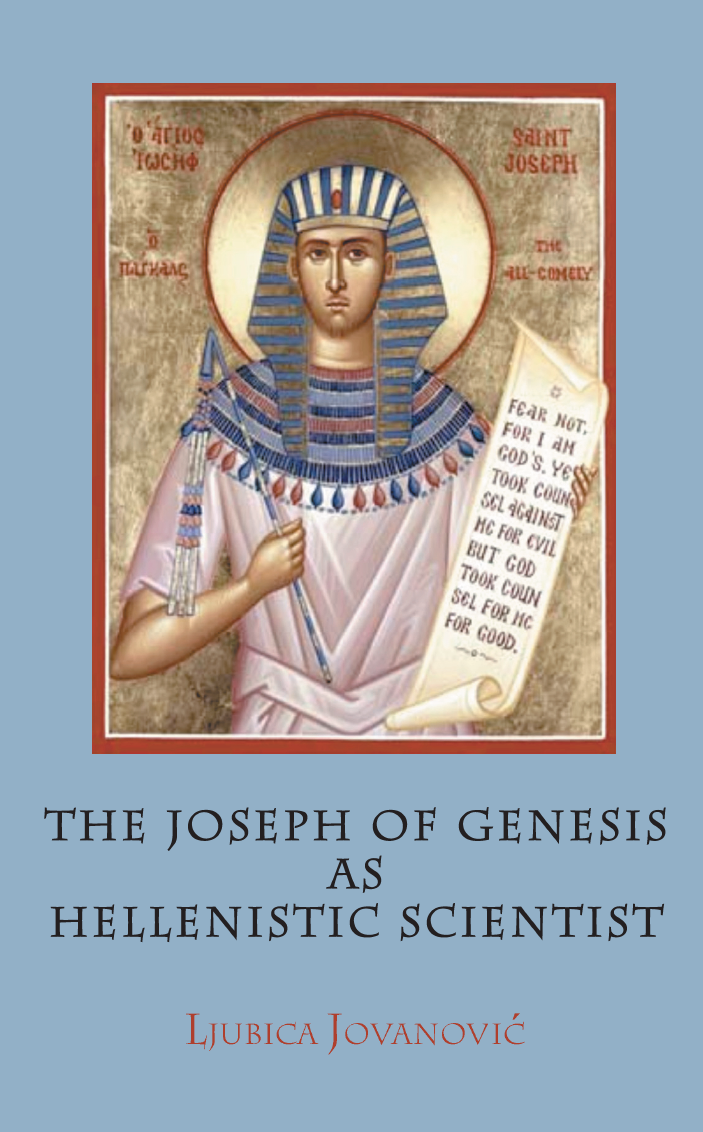

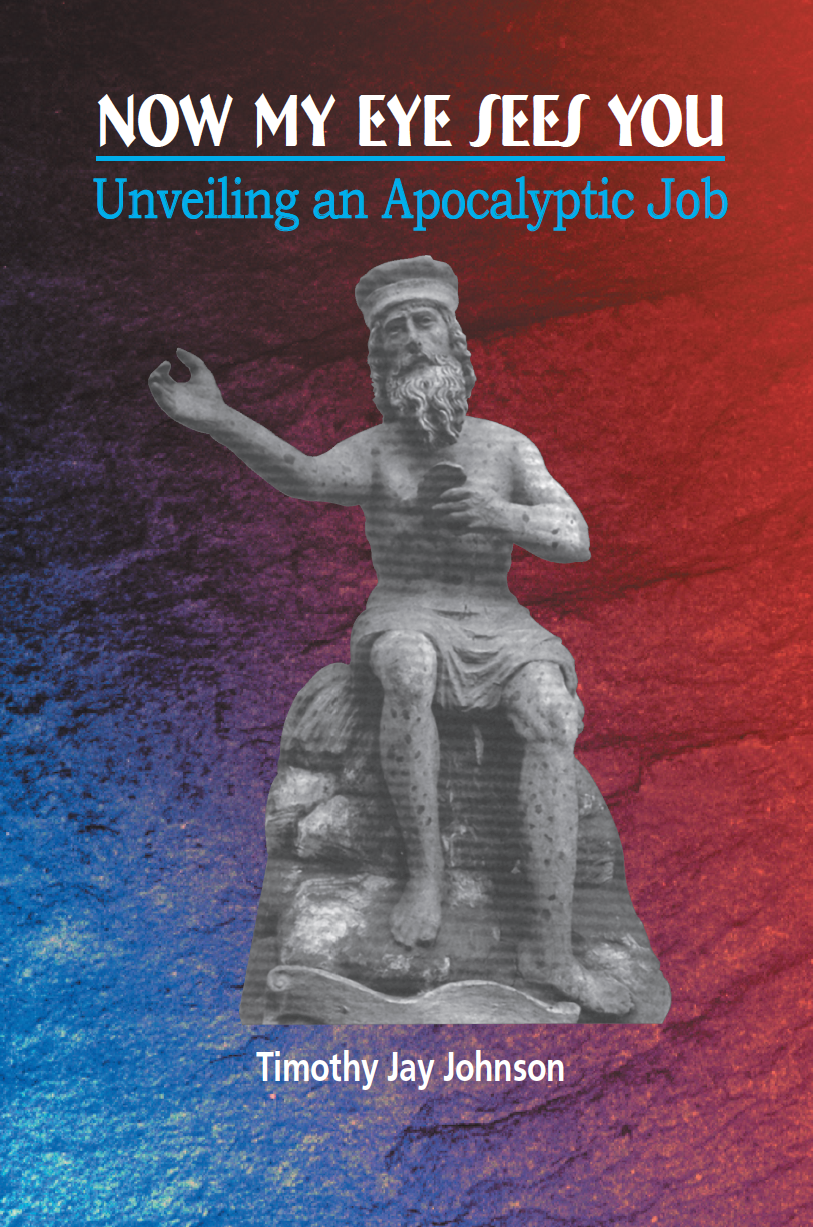
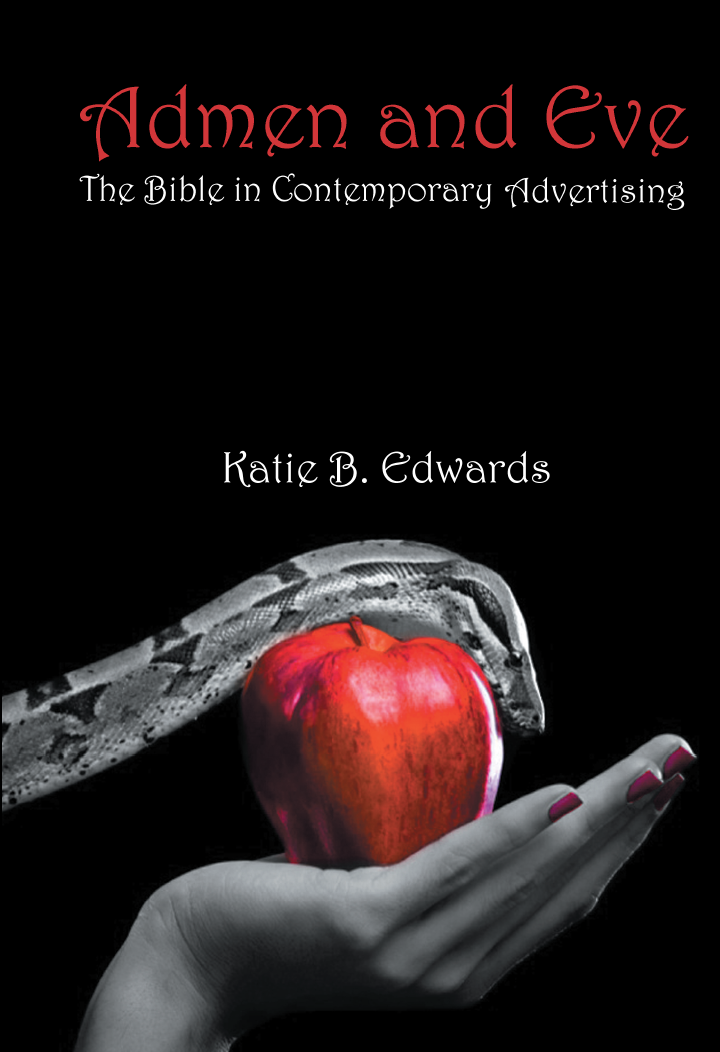
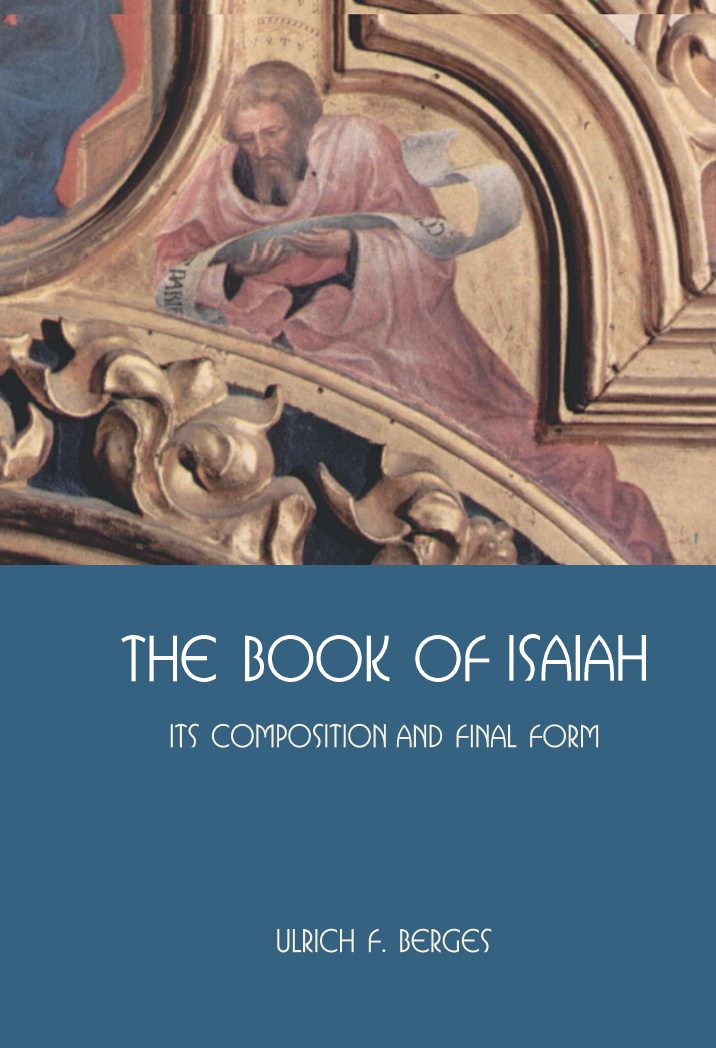
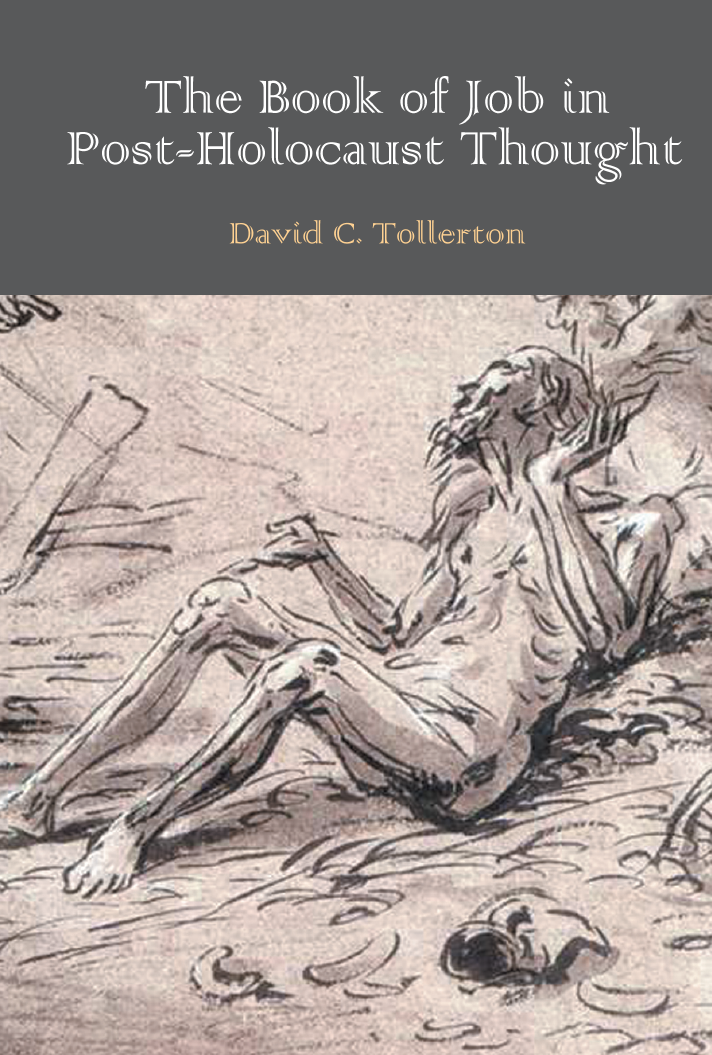
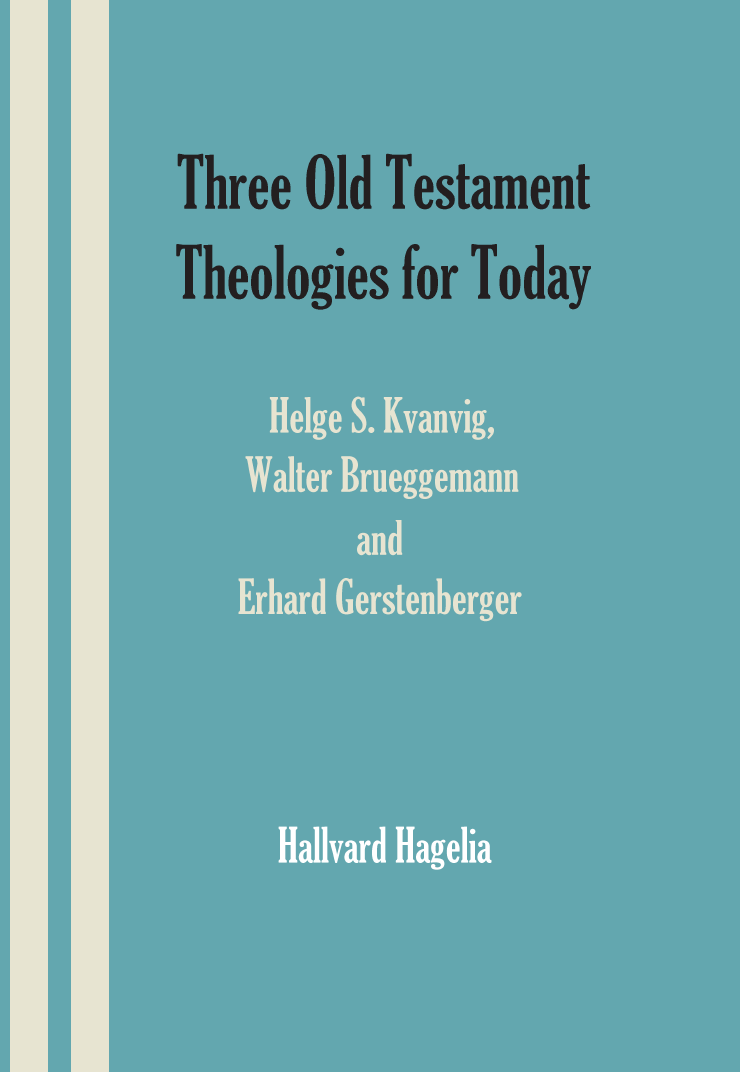

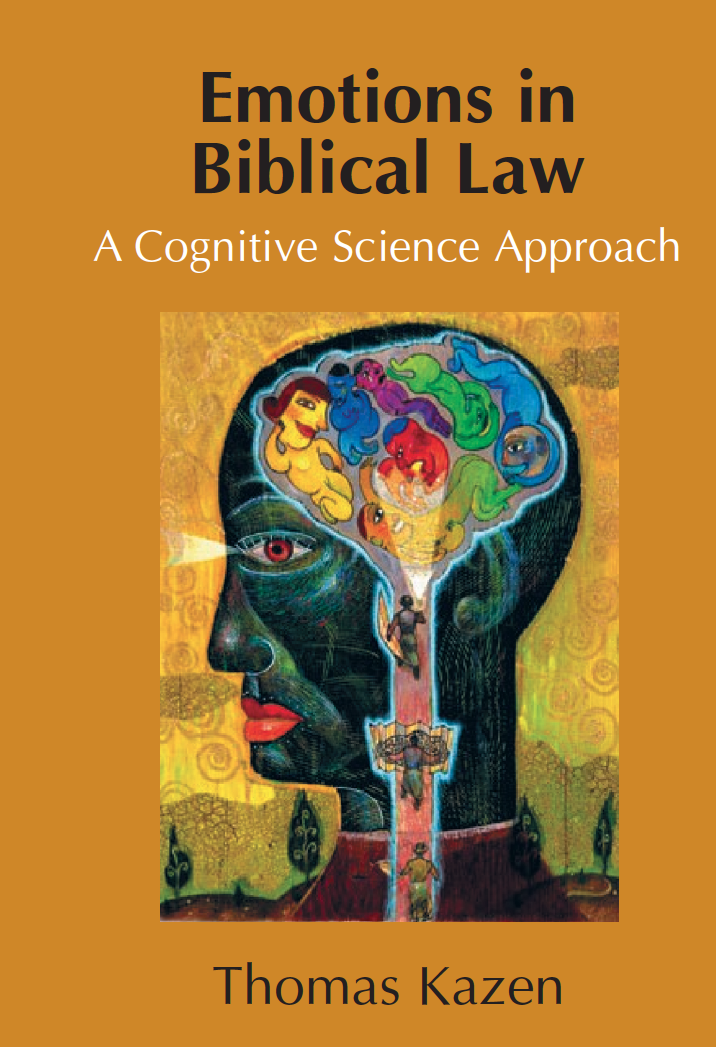
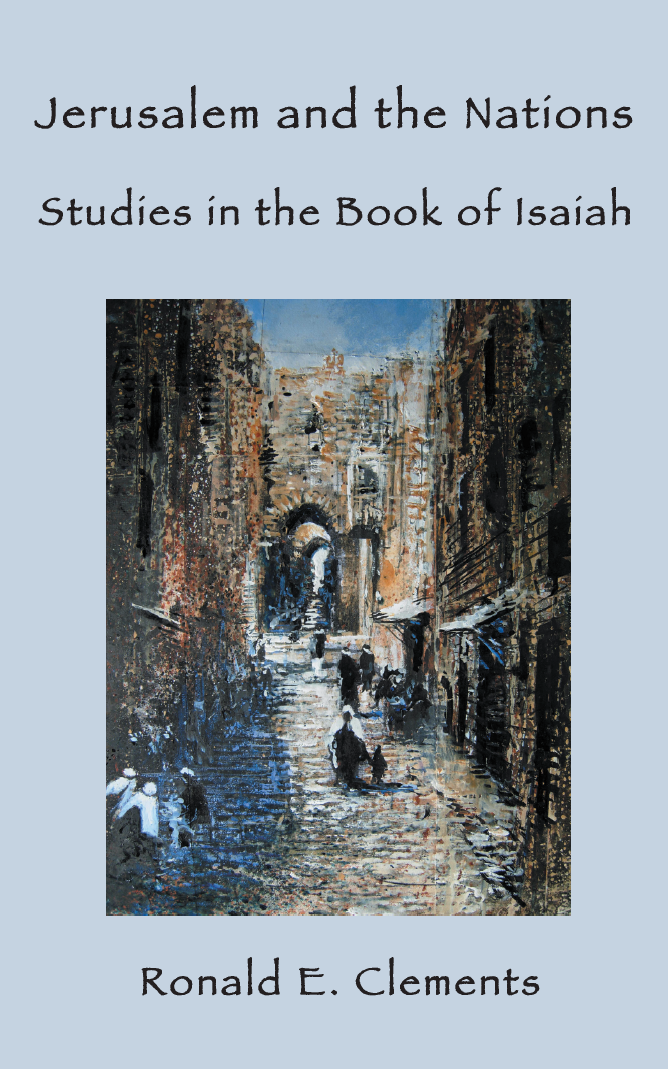
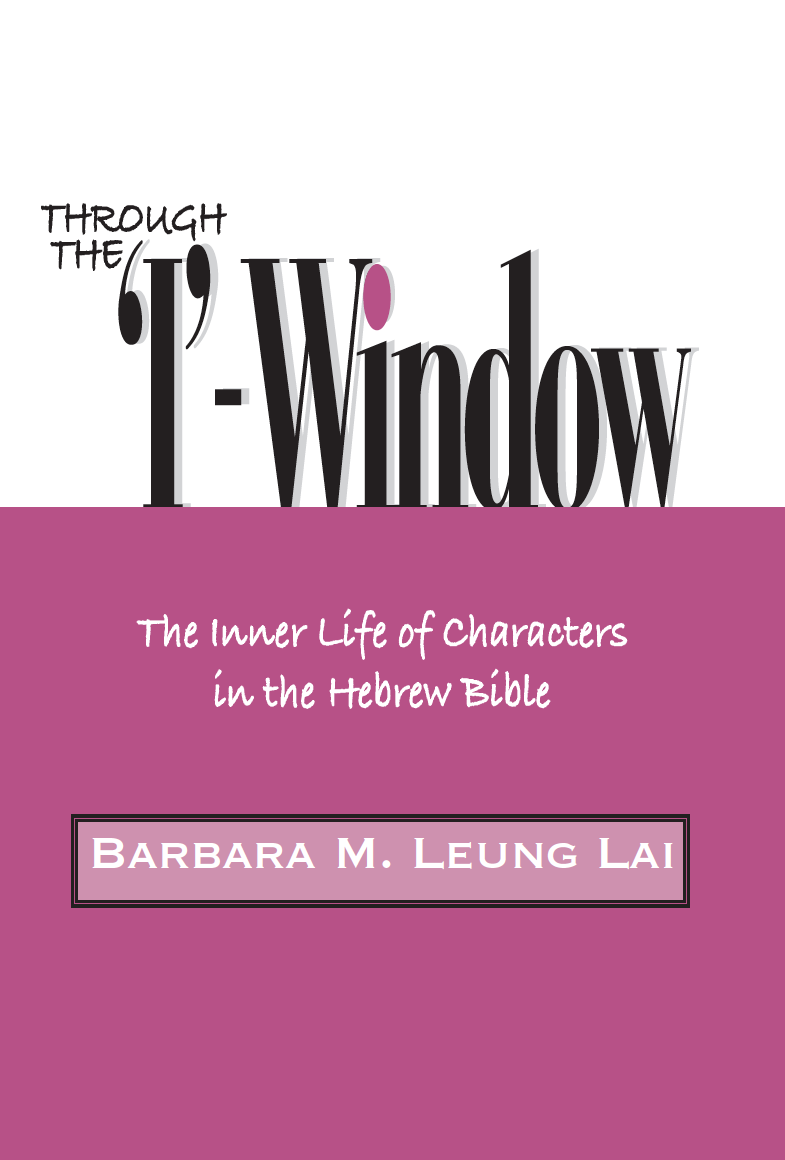
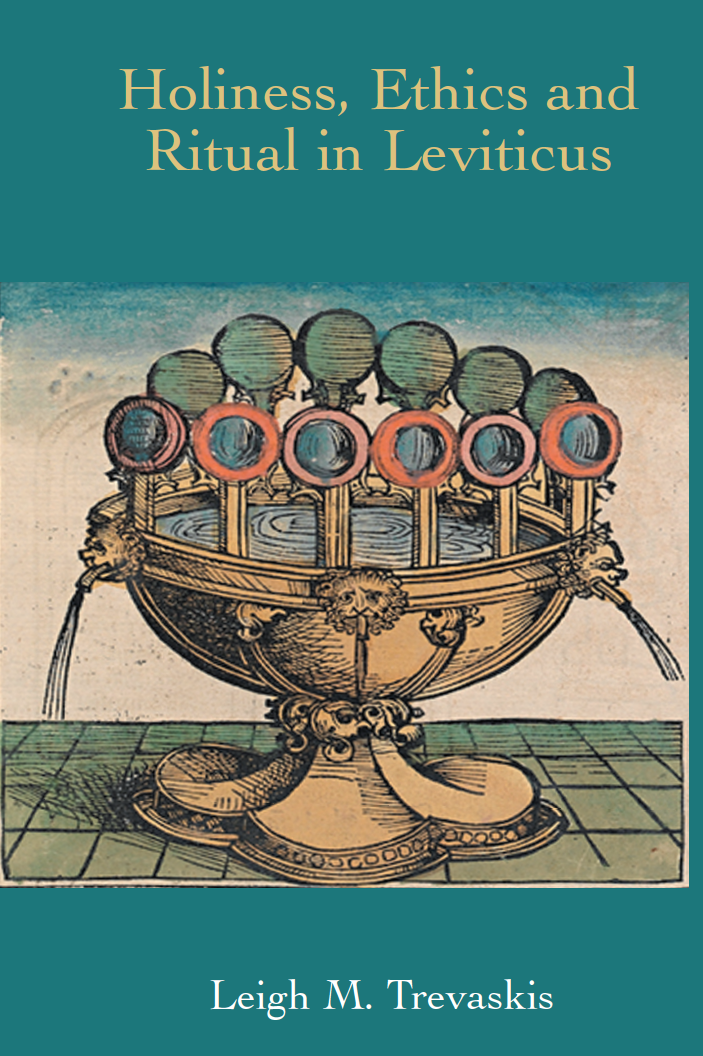

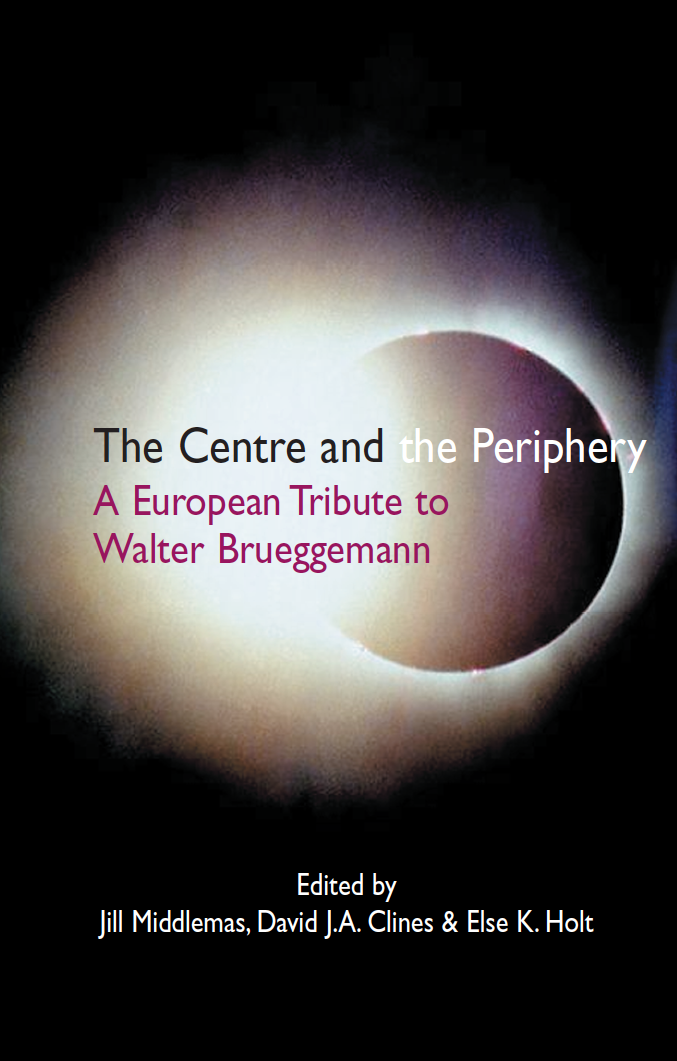
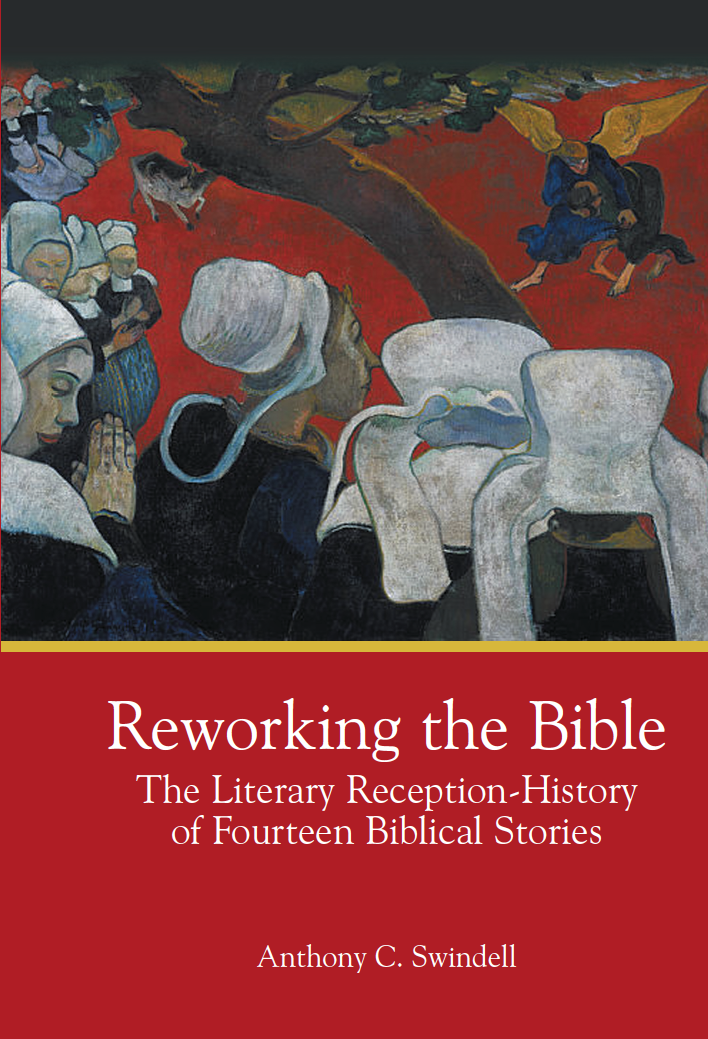
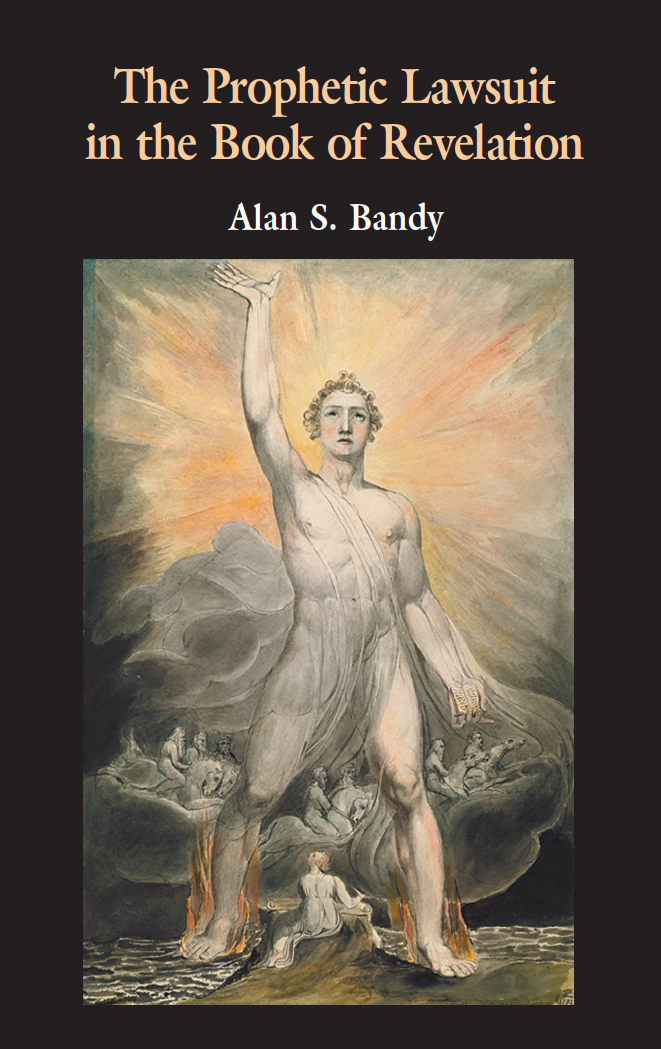
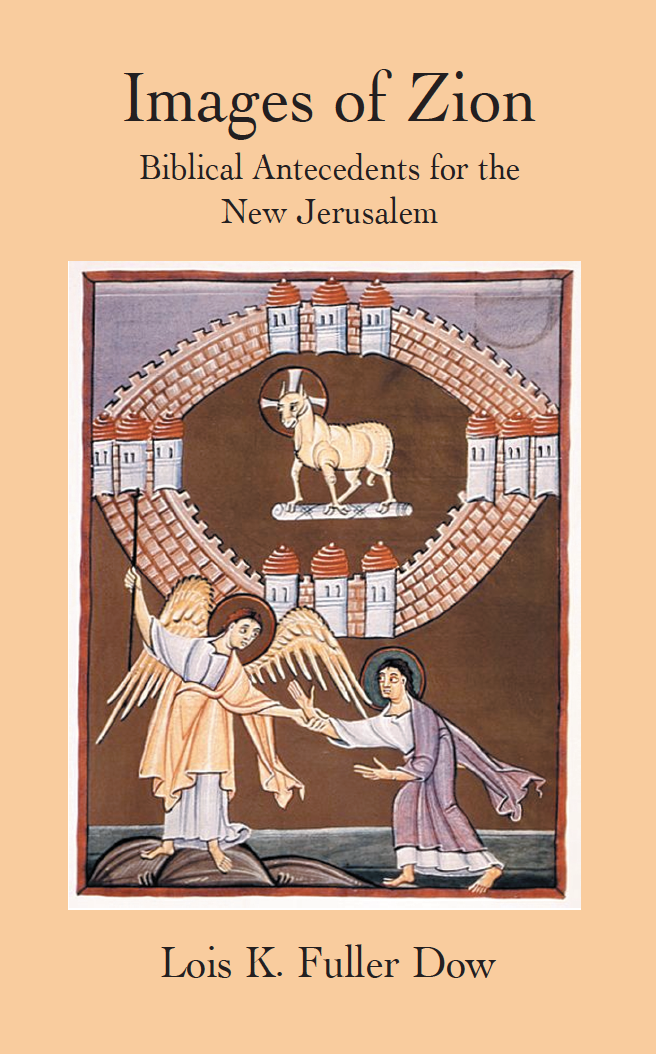
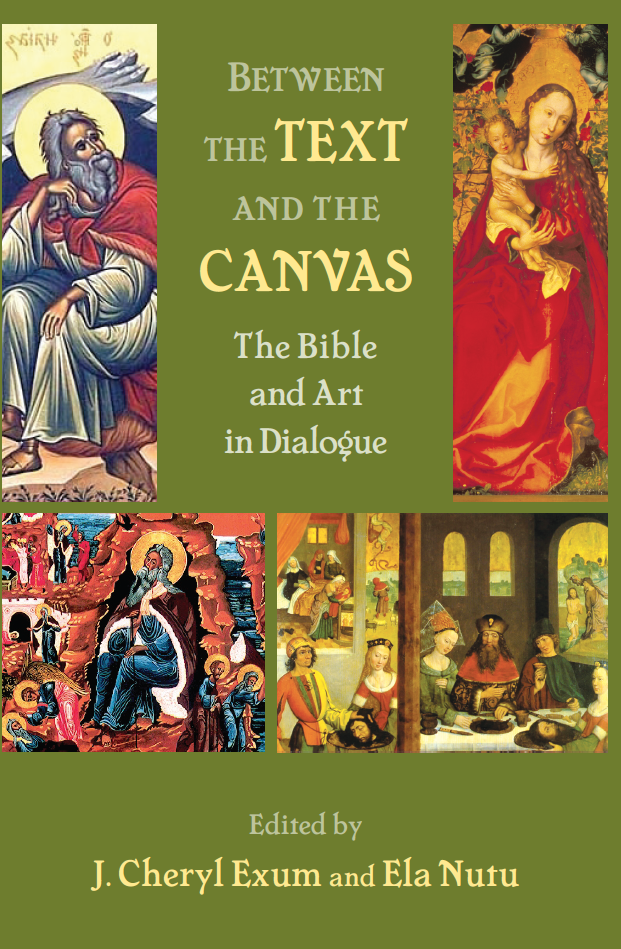
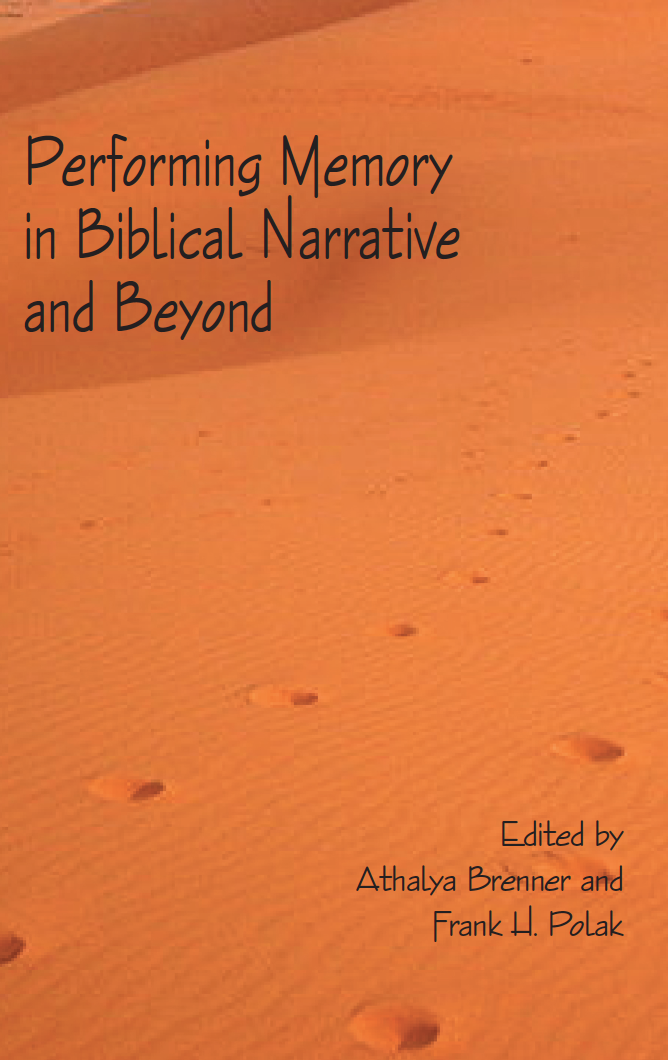
The Birth, the Curse and the Greening of Earth: An Ecological Reading of Genesis 1-11
The Birth, the Curse and the Greening of Earth: An Ecological Reading of Genesis 1-11